alice in wonderland
Alice’s Adventures in Wonderland (commonly shortened to Alice in Wonderland) is an 1865 novel written by English author Lewis Carroll (the pseudonym of Charles Dodgson). It tells of a young girl named Alice, who falls through a rabbit hole into a subterranean fantasy world populated by peculiar, anthropomorphic creatures. It is considered to be one of the best examples of the literary nonsense genre. The tale plays with logic, giving the story lasting popularity with adults as well as with children.
One of the best-known and most popular works of English-language fiction, its narrative, structure, characters, and imagery have been enormously influential in popular culture and literature, especially in the fantasy genre. The work has never been out of print, and it has been translated into at least 97 languages. Its ongoing legacy encompasses many adaptations for stage, screen, radio, art, theme parks, board games, and video games. Carroll published a sequel in 1871, entitled Through the Looking-Glass, and a version for young children, The Nursery “Alice”, in 1890.
Alice Pleasance Hargreaves 4 May 1852 – 16 November 1934), was, in her childhood, an acquaintance and photography subject of Lewis Carroll. One of the stories he told her during a boating trip became the children’s classic 1865 novel Alice’s Adventures in Wonderland. She shared her name with “Alice”, the heroine of the story, but scholars disagree about the extent to which the character was based upon her.
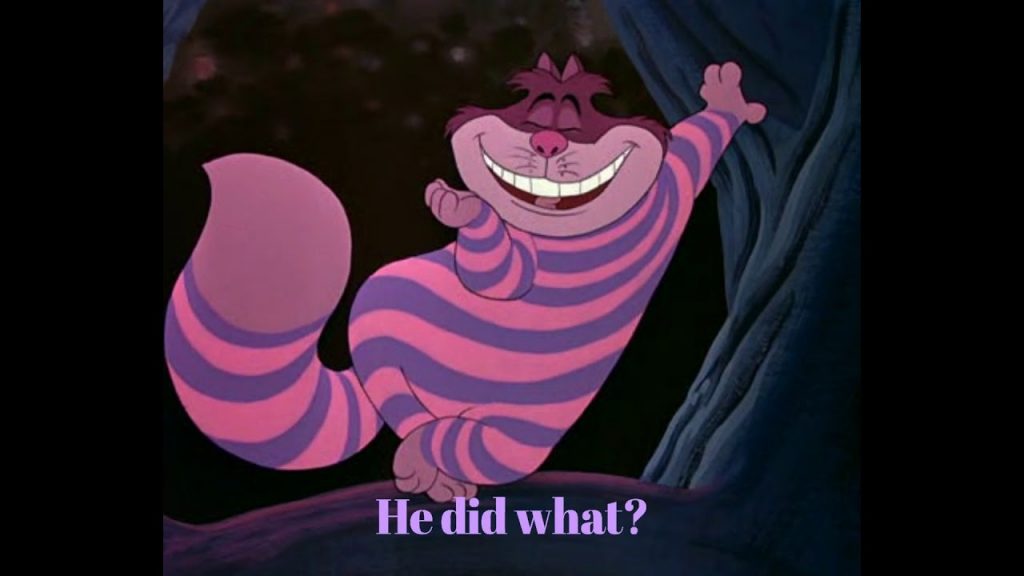
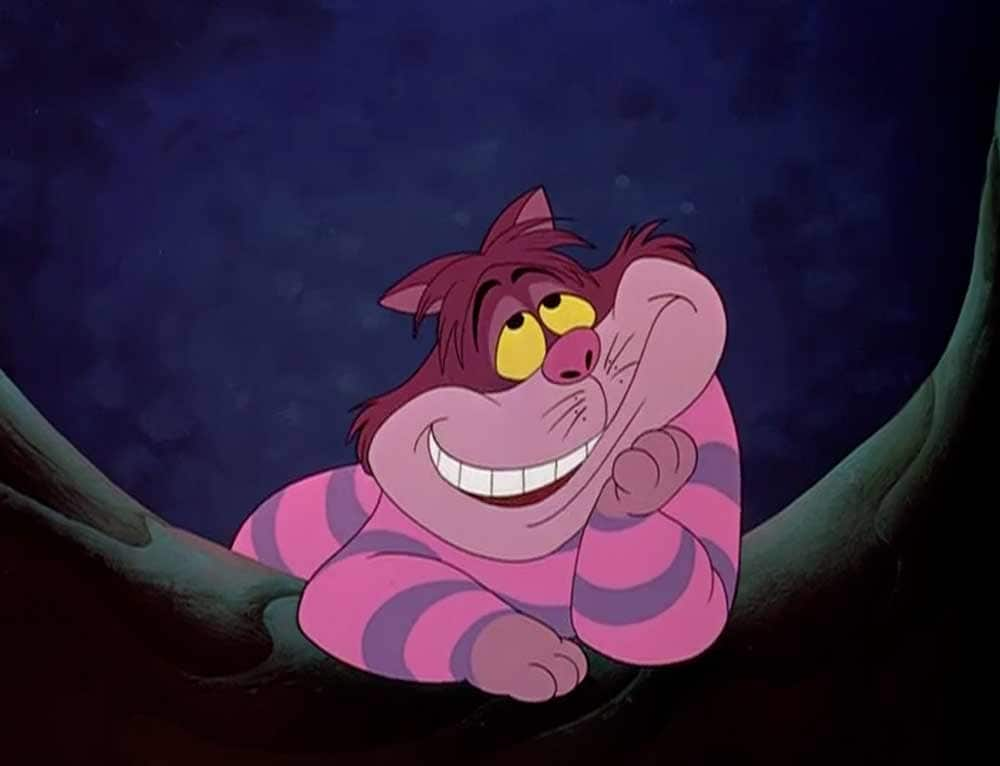
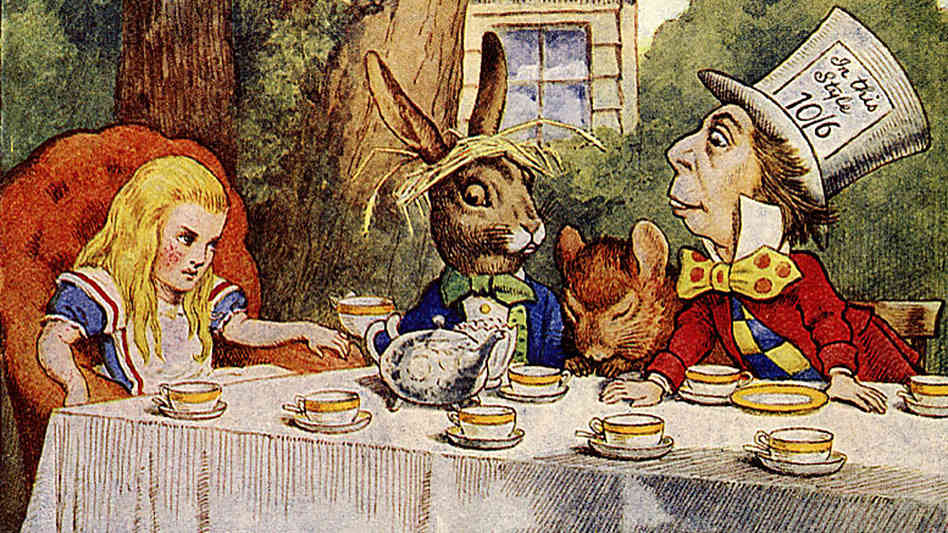
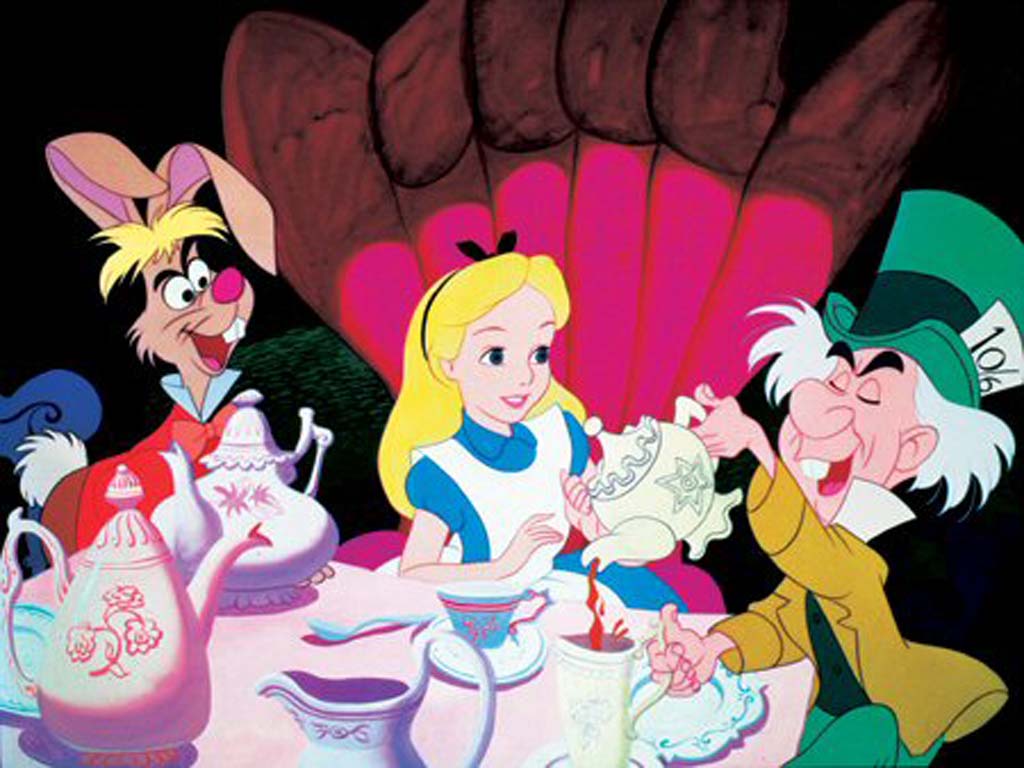
This is “Alice in Wonderland” with pictures and words. This would be great to give to a child or that person like me who nevers tires thinking that we all live in our own wonderlands. Charles Dodgson created worlds within worlds with his story about Alice. What was his real purpose? I don’t think he just wrote it as a gift to a young girl, but that was a different time and I wasn’t there.
Welcome To Wonderland
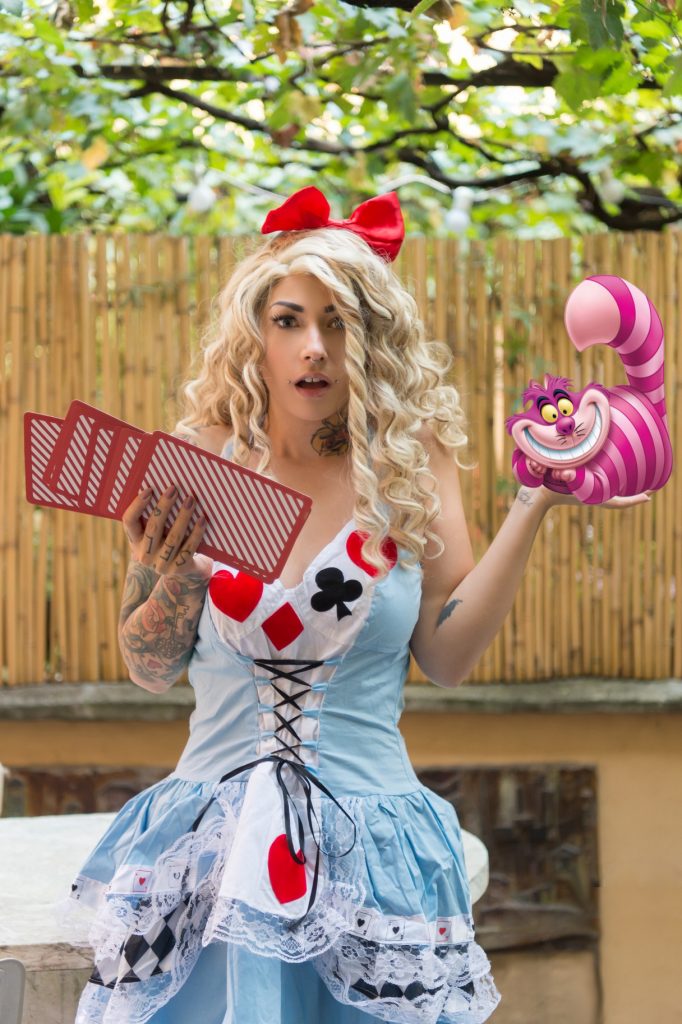
Now we get to explore the real Alice, the one’s that live in our heads. The one that won’t let us sleep at night. The one we think about all day. So Alice did this in the book, well what if she does this. Is it still what she would do? I don’t know. It is up to the art. Art will always speak for it’s self. People can see and will know what makes something art and something not art.
Is everything people do art? It was a question that was once proposed to me and at first thought, “No, of course not.” But the more I thought about this question the more I realized that people have to make art to explain the things they cannot understand, and to show their love for that in life that makes a difference to them.
The image to the left is without a doubt an alice clone, but not exactly. I mean check out the tats, nice! So is this artful, and of course she has her old friend the Cheshire Cat with her. And of course she has the cards with her, and her dress lends to that fantasy.
It’s like the cat said to her, “If you don’t where you want to go, then it doesn’t matter which way you should go to get there.” Oh this is just an observation but don’t you just love what Alice has done to her hair? I’ll bet it was from the Room Of Tears.”
Somewhere in here I want to talk about Charles Lutwidge Dodgson. His story has levels and these levels are portrayed by different characters which I have been able to see through out my life.
That part our brains that can imagine all these different Alice’s is what makes us people. No other animal on this planet can make art to the extent that we do, and that is also what makes us dominate.
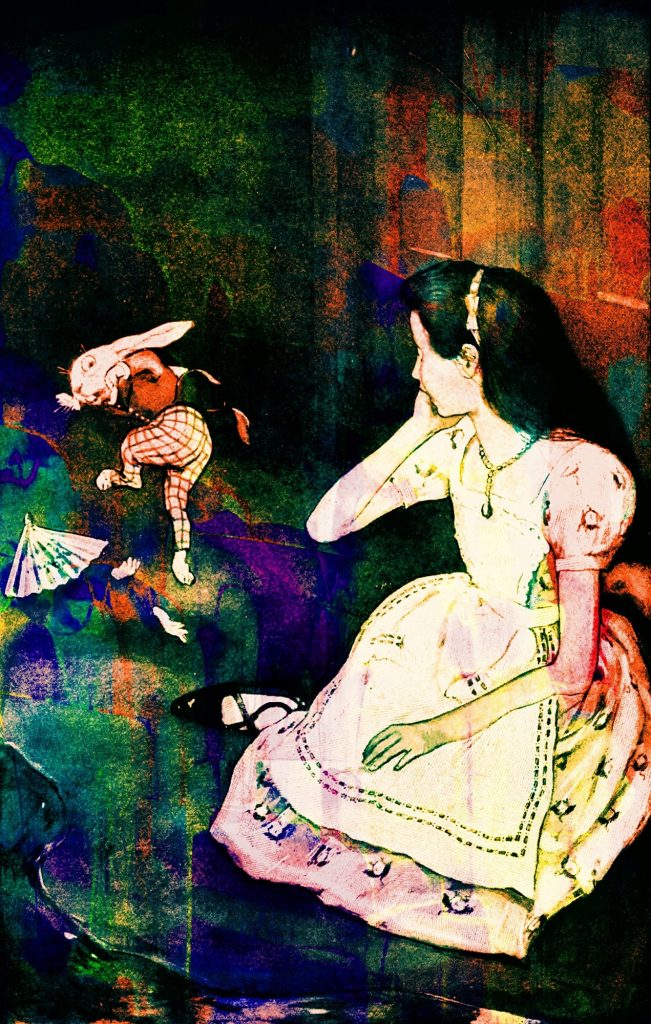
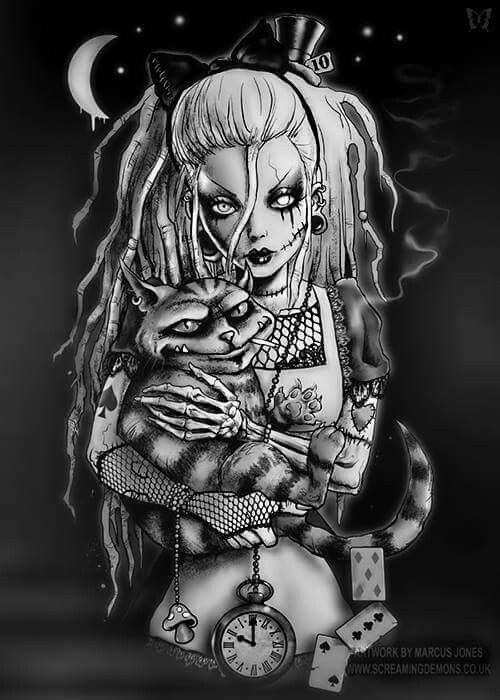
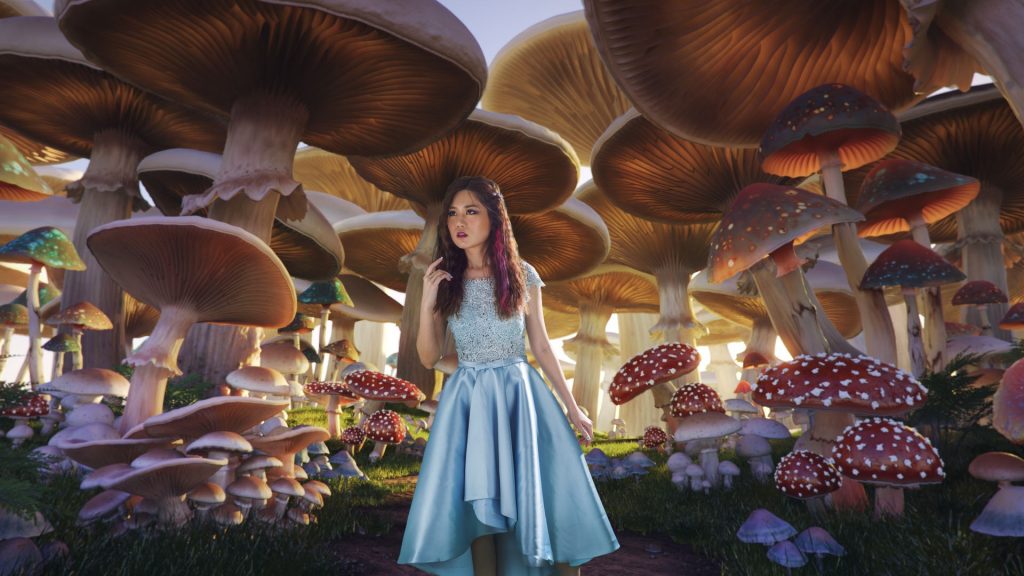
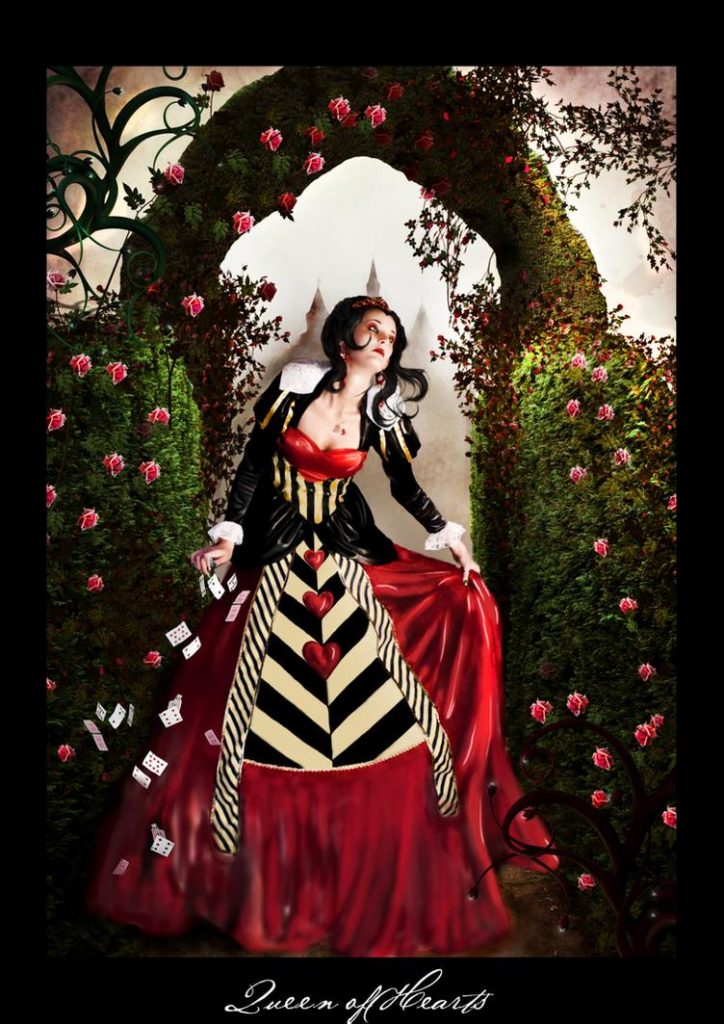
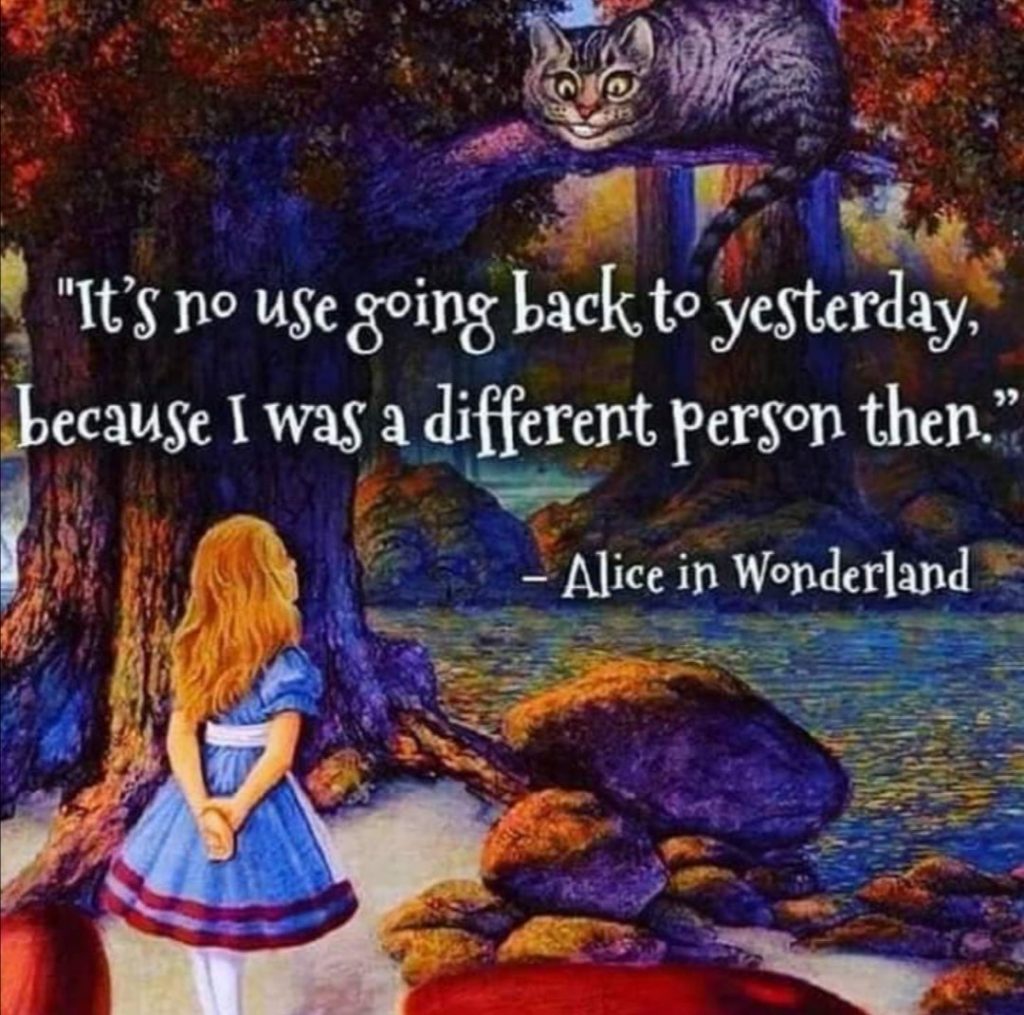
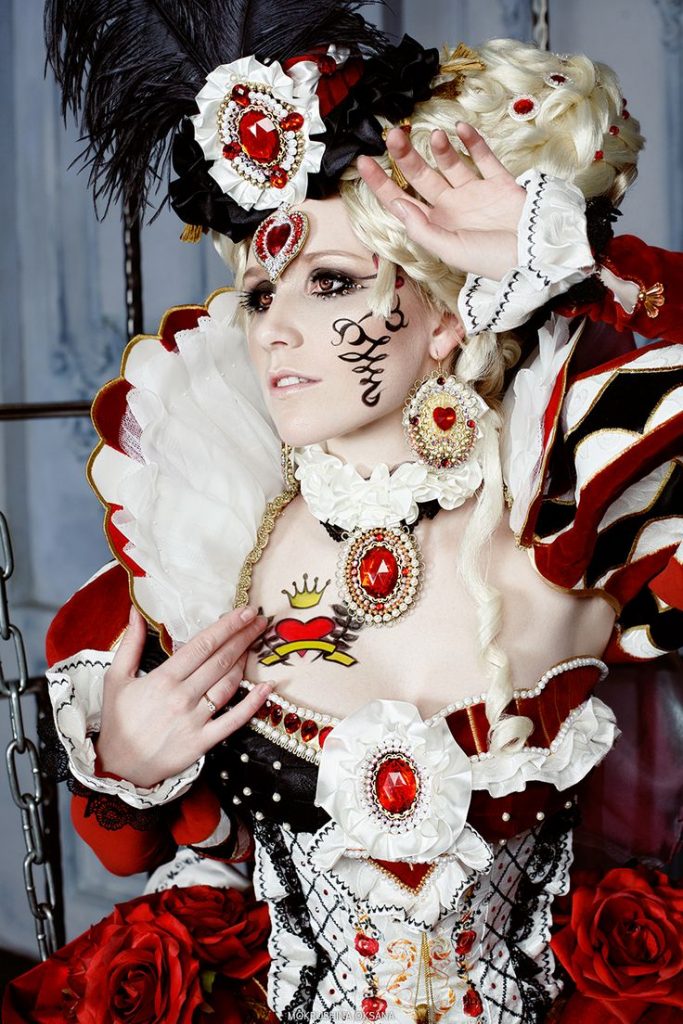
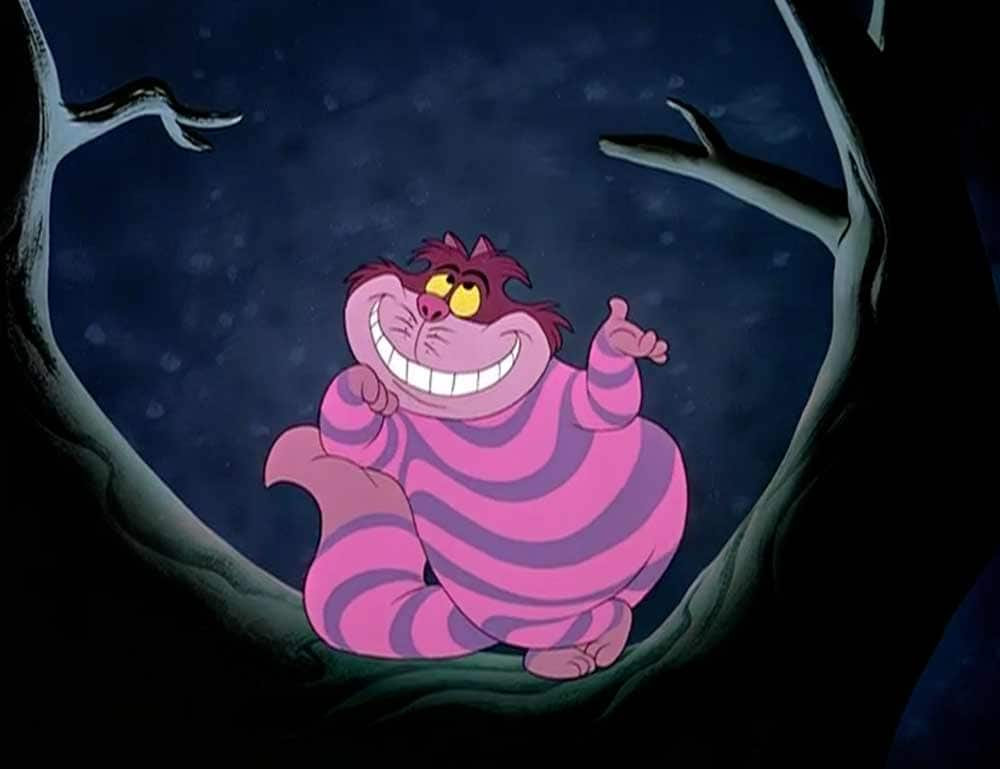
Chapter One – Down the Rabbit Hole: Alice, a seven-year-old girl, is feeling bored and drowsy while sitting on the riverbank with her elder sister. She notices a talking, clothed white rabbit with a pocket watch run past. She follows it down a rabbit hole where she suddenly falls a long way to a curious hall with many locked doors of all sizes. She finds a little key to a door too small for her to fit through, but through it, she sees an attractive garden. She then discovers a bottle on a table labelled “DRINK ME,” the contents of which cause her to shrink too small to reach the key which she had left on the table. She subsequently eats a cake labelled “EAT ME” in currants as the chapter closes.
Chapter Two – The Pool of Tears: The chapter opens with Alice growing to such a tremendous size that her head hits the ceiling. Unhappy, Alice begins to cry and her tears literally flood the hallway. Shrinking down again due to a fan she had picked up, Alice swims through her own tears and meets a mouse, who is swimming as well. Alice, thinking he may be a French mouse, tries to make small talk with him in elementary French. Her opening gambit “Où est ma chatte?” (transl. ”Where is my cat?”), however, offends the mouse, who then tries to escape her.
Chapter Three – The Caucus Race and a Long Tale: The sea of tears becomes crowded with other animals and birds that have been swept away by the rising waters. Alice and the other animals convene on the bank and the question among them is how to get dry again. Mouse gives them a very dry lecture on William the Conqueror. A dodo decides that the best thing to dry them off would be a Caucus-Race, which consists of everyone running in a circle with no clear winner. Alice eventually frightens all the animals away, unwittingly, by talking about her (moderately ferocious) cat.
Chapter Four – The Rabbit Sends a Little Bill: White Rabbit appears again in search of the Duchess’s gloves and fan. Mistaking her for his maidservant, Mary Ann, Rabbit orders Alice to go into the house and retrieve them. Inside the house she finds another little bottle and drinks from it, immediately beginning to grow again. The horrified Rabbit orders his gardener, Bill the Lizard, to climb on the roof and go down the chimney. Outside, Alice hears the voices of animals that have gathered to gawk at her giant arm. The crowd hurls pebbles at her, which turn into little cakes. Alice eats them, and they reduce her again in size.
Chapter Five – Advice from a Caterpillar: Alice comes upon a mushroom and sitting on it is a blue caterpillar smoking a hookah. Caterpillar questions Alice, who begins to admit to her current identity crisis, compounded by her inability to remember a poem. Before crawling away, the caterpillar tells Alice that one side of the mushroom will make her taller and the other side will make her shorter. She breaks off two pieces from the mushroom. One side makes her shrink smaller than ever, while another causes her neck to grow high into the trees, where a pigeon mistakes her for a serpent. With some effort, Alice brings herself back to her normal height. She stumbles upon a small estate and uses the mushroom to reach a more appropriate height.
The Cheshire Cat
Chapter Six – Pig and Pepper: A fish-footman has an invitation for the Duchess of the house, which he delivers to a frog-footman. Alice observes this transaction and, after a perplexing conversation with the frog, lets herself into the house. The Duchess’s cook is throwing dishes and making a soup that has too much pepper, which causes Alice, the Duchess, and her baby (but not the cook or grinning Cheshire Cat) to sneeze violently. Alice is given the baby by the Duchess and, to Alice’s surprise, the baby turns into a pig. The Cheshire Cat appears in a tree, directing her to the March Hare’s house. He disappears but his grin remains behind to float on its own in the air prompting Alice to remark that she has often seen a cat without a grin but never a grin without a cat.
Chapter Seven – A Mad Tea-Party: Alice becomes a guest at a “mad” tea party along with the March Hare, the Hatter, and a very tired Dormouse, who falls asleep frequently only to be violently awakened moments later by the March Hare and the Hatter. The characters give Alice many riddles and stories, including the famous “why is a raven like a writing desk?.” The Hatter reveals that they have tea all day because Time has punished him by eternally standing still at 6 PM (tea time). Alice becomes insulted and tired of being bombarded with riddles and she leaves claiming that it was the stupidest tea party that she had ever been to.
Alice trying to play croquet with a Flamingo
Chapter Eight – The Queen’s Croquet Ground: Alice leaves the tea party and enters the garden where she comes upon three living playing cards painting the white roses on a rose tree red because The Queen of Hearts hates white roses. Alice then meets the King and Queen. The Queen, a figure difficult to please, introduces her signature phrase “Off with his head!” which she utters at the slightest dissatisfaction with a subject. Alice is invited (or some might say ordered) to play a game of croquet with the Queen and the rest of her subjects but the game quickly descends into chaos. Live flamingos are used as mallets and hedgehogs as balls and Alice once again meets the Cheshire Cat. The Queen of Hearts then orders the Cat to be beheaded, only to have her executioner complain that this is impossible since the head is all that can be seen of him. Because the cat belongs to the Duchess, the Queen is prompted to release the Duchess from prison to resolve the matter.
Chapter Nine – The Mock Turtle’s Story: The Duchess is brought to the croquet ground at Alice’s request. She ruminates on finding morals in everything around her. The Queen of Hearts dismisses her on the threat of execution and she introduces Alice to the Gryphon, who takes her to the Mock Turtle. The Mock Turtle is very sad, even though he has no sorrow. He tries to tell his story about how he used to be a real turtle in school, which the Gryphon interrupts so they can play a game.
Chapter Ten – Lobster Quadrille: The Mock Turtle and the Gryphon dance to the Lobster Quadrille, while Alice recites (rather incorrectly) “‘Tis the Voice of the Lobster”. The Mock Turtle sings them “Beautiful Soup” during which the Gryphon drags Alice away for an impending trial.
The Queen of Hearts glaring at Alice, screaming “Off with her head! Off—”. “Nonsense!” said Alice, very loudly and decidedly, and the Queen was silent.
Chapter Eleven – Who Stole the Tarts?: Alice attends a trial whereby the Knave of Hearts is accused of stealing the Queen’s tarts. The jury is composed of various animals, including Bill the Lizard, the White Rabbit is the court’s trumpeter, and the judge is the King of Hearts. During the proceedings, Alice finds that she is steadily growing larger. The dormouse scolds Alice and tells her she has no right to grow at such a rapid pace and take up all the air. Alice scoffs and calls the dormouse’s accusation ridiculous because everyone grows and she cannot help it. Meanwhile, witnesses at the trial include the Hatter, who displeases and frustrates the King through his indirect answers to the questioning, and the Duchess’s cook.
Chapter Twelve – Alice’s Evidence: Alice is then called up as a witness. She accidentally knocks over the jury box with the animals inside them and the King orders the animals be placed back into their seats before the trial continues. The King and Queen order Alice to be gone, but Alice disputes their judgement and refuses to leave. She argues with the King and Queen of Hearts refusing to hold her tongue, only to say, “It’s not that I was the one who stole the tarts in the first place”, in the process. Finally, the Queen confirms that Alice was the culprit responsible of stealing the tarts after all (which automatically pardons the Knave of Hearts of his charges), and shouts, “Off with her head!”, but Alice is unafraid, calling them just a pack of cards; although Alice holds her own for a time, the card guards soon gang up and start to swarm all over her. Alice’s sister wakes her up from a dream, brushing what turns out to be some leaves and not a shower of playing cards from Alice’s face. Alice leaves her sister on the bank to imagine all the curious happenings for herself.